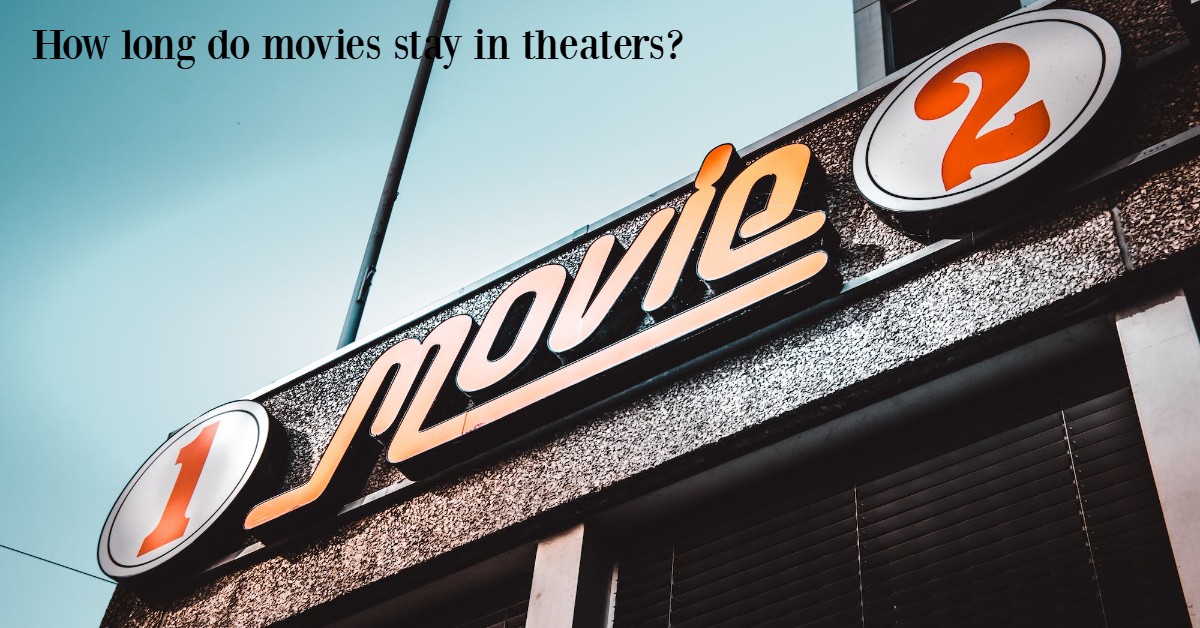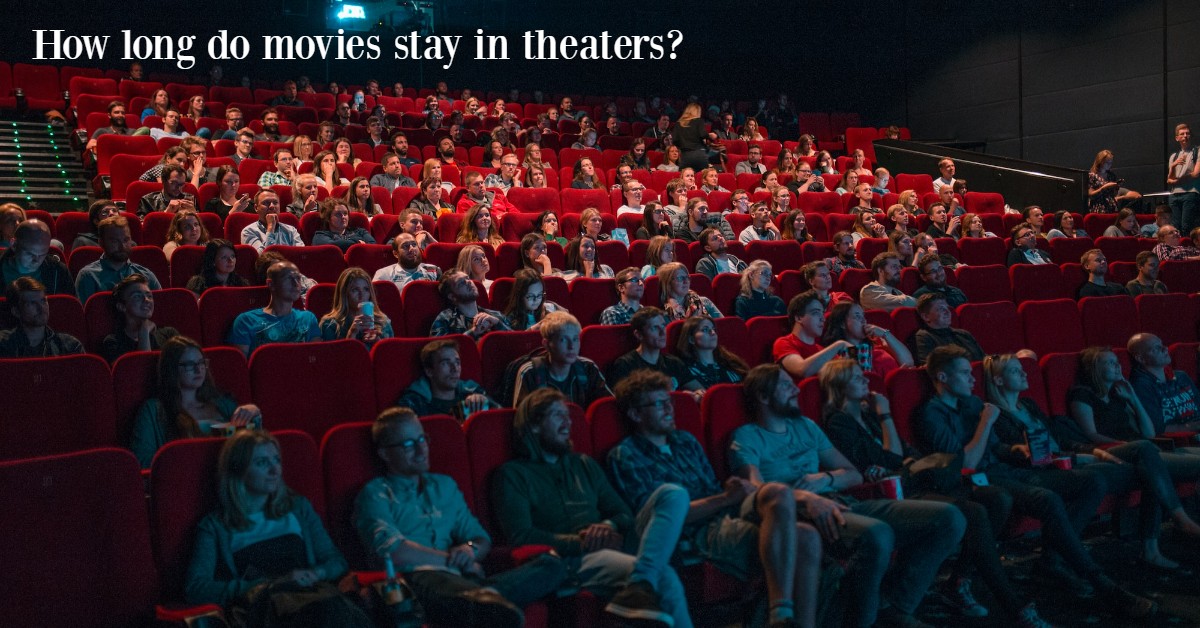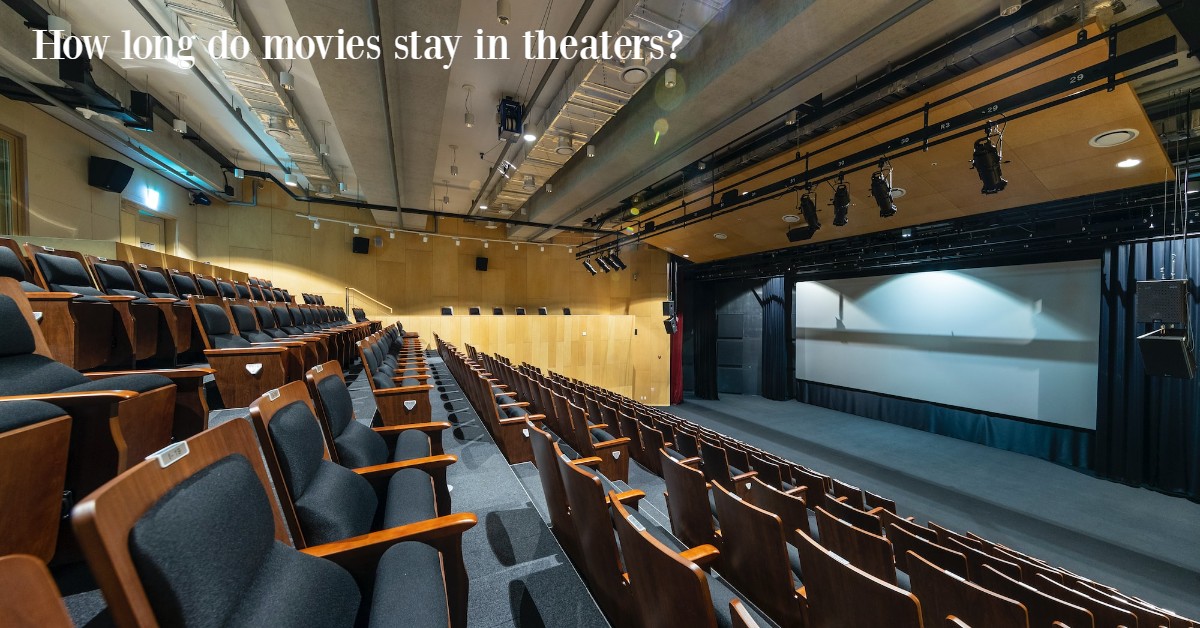How long do movies stay in theaters? (2025 Review)
Do you desire to know how long do movies stay in theaters?
When a new movie is released in theaters, there is that huge anticipation from many to see the movie. The truth is that not everyone can afford to watch a movie when it first comes out. So many people do not have the luxury of time. And as such, it is necessary to know the duration a movie stays in theaters.

If it takes you several weeks to go to the theater, you may wonder if you missed out on seeing the movie you wanted to see.
We made this post on how long movies stay in theaters to help you and guide you in making plans to see your favorite movies in the theater.
How long do movies stay in theaters?
The majority of popular movies are in theaters for an average of four weeks. Some barely last around two weeks, while others last much longer.
The duration of a theatrical run is not predetermined (though theaters and movie executives can make an educated prediction for planning purposes). There is only so much room in a theater.
If ticket sales for a certain movie begin to fall, the theater must replace the older movie with a newer, more popular film in order to remain in business.
Movies that stayed in theaters for such a long time
Some films were such smash hits that they stayed in theaters far longer than anyone expected. Examples of movies with long theatrical runs are as follows:
- Rocky Horror Picture Show: Theatrical run of 2,000+ weeks
- E.T.: Theatrical run of 52+ weeks
- Star Wars: Theatrical run of 44 weeks
- Back to the Future: Theatrical run of 37 weeks
- Beverly Hills Cop: Theatrical run of 30 weeks.
Factors that determine how long a movie stays in theaters
A variety of factors contribute to the length of a movie’s theater stay.
The factors that determine how long a movie stays in theaters are as follows:
1. Popularity
The popularity of a film can be used to predict how long it will play in theaters. The more people who want to see a movie and pay for theater tickets, the longer it will play.
To gauge a movie’s popularity, simply search the internet for movies that people are talking about. Social media platforms are filled with an abundance of this information.
With sophisticated marketing strategies and the oversaturation of advertisements, moviemakers can sometimes tell us which films are popular before we even know it.
At times, the popularity is nearly entirely due to the director or cast. People will get enthusiastic about a new Tarantino film or a film featuring their favorite actor, even if they know nothing about it or have heard it’s not very good.
Therefore, when a movie and its cast and crew are popular, it will stay long in the cinemas.
2. Audience Reception

Related to popularity is audience reception. It is not just enough for the film to be popular. Movies tend to do better when people enjoy them.
You will know people actually like a movie by the reviews and feedback they give after seeing the movie. People provide feedback through word of mouth. They also provide extensive internet reviews. Professionals also contribute their thoughts in the form of reviews.
You may not believe your friend’s view, but if 5,000 people on Twitter think that a movie isn’t so great, you may decide to wait till it’s available on a streaming site.
Viewers may be more likely to see a film that has received fantastic reviews from critics and is rumored to be a candidate during award season.
3. Genre of the movie
The cinema is great for seeing movies. Because of the immersive screen and surround sound soundtrack, theaters provide a one-of-a-kind watching experience.
Have you ever heard someone refer to a movie as one “you want to see in theaters” and another as “one you can watch at home”? Often, the distinction is based on the film’s genre.
When it comes to action flicks, theater amenities are very useful. The heightened effects of the theater help action films, notably superhero films. You will not only be able to see the automobile chase, but you will also be able to hear every movement and feel the earth tremble during a collision.
The sensory overload that you can’t get in the comfort of your own home may make even awful movies enjoyable to see in the theater.
Kids’ movies often benefit from going to the theater, especially if they use 3D technology.
On the other hand, unless they really want to see it as soon as it comes out, many people don’t feel the need for the theater’s enormous screen and audio system when watching a romantic drama or slapstick comedy.
Therefore, the genre of the movie determines how long the movie stays in the theater.
4. Competition
Another factor that determines how long a movie stays in the theater is competition.
Timing is so important in the film industry. Movies must be released at a separate time from their competitors if they want to remain in the theater for a long time.
You know that if another highly anticipated film is released at the same time as a movie, viewers may be forced to pick between the two. When if they were released a month apart, the viewer may have gone to both.
For example, the Shawshank Redemption, probably one of the best films of all time, was a box financial failure as it competed with Forrest Gump. Fortunately, the film’s popularity grew over time, even if more people viewed it on DVD and television than in theaters.
5. MPAA Rating
The Motion Picture Association of America maintains a comprehensive rating system for film content. And the rating can influence how long a film stays in theaters.
Here is how the rating system works:
- G stands for general audiences. All Ages Are Welcome.
- PG: Parental Guidance is advised. Some materials may not be appropriate for children.
- PG-13: Parents are strongly advised to make sure children under the age of 13 avoid this film. Some content may be inappropriate for children under the age of 13.
- R: R stands for Restricted. Children under the age of 17 must be accompanied by a parent or legal guardian.
- NC-17: No one under the age of 17 is admitted.
Raising a movie’s rating from PG-13 to R substantially reduces the number of people who may view the film.
Generally, a smaller target demographic means fewer ticket sales.
Many executives strive for a higher rating in order to improve box office earnings, which may imply that some sequences are edited or cleaned up.
6. Theater Price
How long do movies stay in theaters? The theater price, to a large extent, determines this duration.
Ticket costs for movies have risen dramatically over the years. The average ticket price in 2001 was $5.66, and it has now increased to about $10.
Keep in mind that the average includes second-run venues as well as small rural theaters. If those averages appear inexpensive to you, you’re probably thinking about the price at your local first-run cinema in a good suburb.
Concessions account for one-third of most theaters’ income. The remaining two-thirds are derived through ticket prices.
As the cost of movies rises, fewer people desire to see them, resulting in fewer films being released than during the film’s heyday. Thereby reducing the duration a movie stays in theaters.
7. Theater Overhead Expenses
To show a particular film, theaters must pay a significant fee. They sometimes pay the fee upfront. Other times the pay is dependent on the movie’s sales.
The theaters must pay their employees, building utilities and insurance. Because of the vast quantity of area needed, the costs quickly build up.
8. Effects of Changes in Times and Seasons (Movies Then and Now)
It’s human nature to seek entertainment, so it’s no surprise that movies have played a significant part in mainstream culture over the years.

The theater experience was very different 50 to 100 years ago than it is today. Television did not exist when movies initially became popular. People who wanted to see a movie had no alternative but to go to the cinema. Over time, movie technology improved slowly.
Then came the effects of sound and color in movies.
Some individuals began purchasing televisions for their homes, but they had little control over the programming, the image quality was poor, and the displays were small.
Movies were still the most popular form of entertainment at the time. People would go to the movies and spend the entire day watching movies for a fair price.
Viewers grew enthralled and produced an increasing number of films. New cameras and editing software continued to increase film quality. And then, home entertainment, like movies, reached its peak. Large flatscreen televisions reminded folks of going to the movies. People began to believe that they could watch movies at home after the arrival of cable and streaming services.
To acquire early access to new releases, criminals began pirating movies by recording them in theaters, creating copies, and illegally selling them. This has greatly affected the demand for movie theaters. And as such, nowadays, fewer people are interested in seeing movies in the cinema.
A Brief Film Timeline
See the broad timeline of significant occasions in film history to see how far we’ve come:
- 1905: Pittsburgh opened the first movie theater
- 1914: Charlie Chaplin stars in The Tramp
- 1924: Walt Disney creates Alice’s Wonderland
- 1927: First feature-length talkie, The Jazz Singer
- 1931: Double features introduced
- 1939: Wizard of Oz stuns with a three-strip technicolor process
- 1946: First Cannes Film Festival
- 1968: Film rating system debuts
- 1976: VHS invented
- 1998: Introduction of projectors instead of reels of film
9. Studio Productions Vs. Indie Film
There are two types of films available: studio productions and independent films.
A significant movie studio backs studio projects which have a large budget. These movies are therefore called studio production films.
Independent films have a significantly lower budget and, as a result, a much smaller distribution.
Because studio films are made by a vast team of executives, it is more of a collaborative effort based on how to generate the most money.
Film executives research previous films and what made them great in order to replicate their success, sometimes at the expense of creative integrity.
While independent films are less expensive, there are fewer people involved in the decision-making process, allowing for a distinct artistic imprint on the finished product.
While independent filmmakers may wish to generate money as a side aim, artistry takes precedence over revenues.
Consider Michael Bay as an excellent example of a typical studio director. His films have high budgets and much larger box office sales due to an effective action-movie formula.
Indie directors abound, with talent levels ranging from novice to genius. Many indie films are released on a tiny scale that the general public is unaware of. Only the best ones become well-known and achieve box office success. Because funding Indie films is incredibly challenging, they often do not have the resources to release the film nationally.
People are unaware that the film exists in the absence of a huge release and costly marketing. It takes a truly terrific film to turn a modest audience into a large-scale success.
To raise funds, directors will launch crowdfunding campaigns or go the traditional route of approaching investors. After the fundraising is completed, the director must work with the resources at their disposal.
For example, Tarantino had actors in Reservoir Dogs wear their own suits throughout filming to save money on clothes.
Some examples of indie film success include:
- Eraserhead had a $10,000 budget yet grossed $7 million.
- The budget for Paranormal Activity was $15,000, but it grossed $200 million.
- Clerks: a $27,575 budget yielded a $3.2 million profit.
- The Blair Witch Project had a $60,000 budget yet earned $249 million.
- Napoleon Dynamite had a $400,000 budget but earned $46 million.
- Rocky: a $1 million budget that resulted in a $225 million profit
In most situations, once a director achieves the impossible and bursts into the scene, they not only profit from their first film but they move on to secure higher budgets with bigger studios, increasing their future income for life.
It can therefore be concluded that studio productions make their way faster and cinemas and last longer as compared to small independent productions.
10. The Type of Movie Theater
How long do movies stay in theaters? Another reason that will determine if a movie stays in a theater long enough is the type of theater.
Before you plan a movie night at the theater, you should understand the various sorts of cinemas, so you know what kind of movies to expect. The type of theater determines how long a movie last in it and the rush to see that movie.
A. Multiplex Cinema
When most people think of going to see a new release movie, they think of a multiplex theater. A multiplex theater, by definition, has multiple auditoriums screening multiple movies and is frequently part of a chain. These cinemas show the most recent and popular films of the time.
Many multiplex cinemas also have an IMAX theater, which uses advanced technology to enhance the experience. These theaters have the nicest facilities, but they also have the highest prices.
B. Independent Second-Run Cinemas
Independent cinemas are not affiliated with a larger chain; thus, they can screen movies at their discretion.
Because they have a lower budget, they usually play movies after the enthusiasm (and the cost of showing it) has died down a few weeks after the film’s initial release.
These theaters are also showing more independent films. Independent cinemas are less expensive than multiplex theaters.
C. Drive-In Theaters
Drive-in theaters try to recreate the nostalgic experience of going to the drive-in. A drive-in theater, as the name implies, is a theater where visitors drive into a parking lot and watch movies while listening to the radio.
Most drive-ins don’t have the money right now to show new movies. On Halloween and the Fourth of July, though, they will play appropriate oldies.
Conclusion:
You know, the thing is, movies are designed to be seen in theaters.
While many moviegoers like seeing a new release on opening weekend, you may not have the time or prefer to avoid the throng.
So, how long do movies stay in theaters?
We wish there were a precise number of days, but that is not how the theatrical world operates. A film might be in theaters for as short as a few weeks or as long as many months. It all depends on what other films are coming out, how popular the film is, and the availability of theaters in a specific place.
Recommended:
What Did Jenny Die From in Forrest Gump? (Claims and Truth)
How Tall is Coryxkenshin (Every Detail About Cory: 2025)
Blue Whale versus Megalodon [Everything you need to know]
